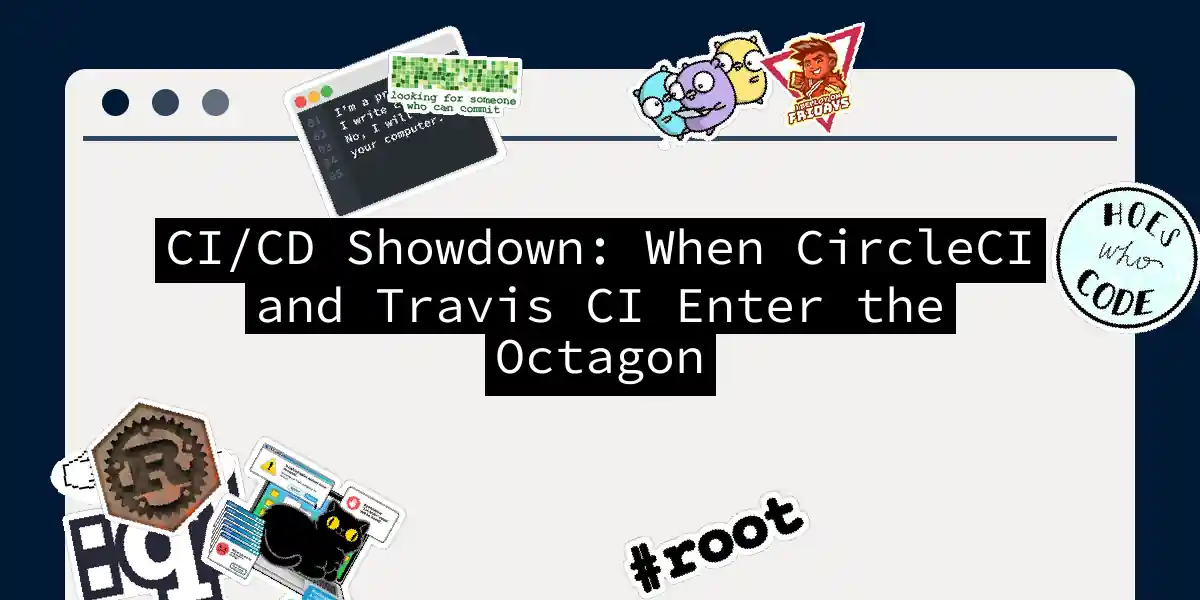Picture this: You’re a chef in a high-stakes cooking competition. Your CI/CD pipeline is your kitchen brigade - one wrong move and your soufflé of code collapses. Today we’re comparing two Michelin-starred sous chefs: CircleCI (the precision knife master) vs Travis CI (the reliable firestarter). Let’s see who deserves a permanent spot in your DevOps kitchen.
From Zero to CI Hero in 3 Rounds
Round 1: Setup Smackdown
Both tools require YAML configuration, but their approaches differ like tacos vs sushi:
# .circleci/config.yml - The Sushi Chef
version: 2.1
orbs:
python: circleci/[email protected]
jobs:
build-me-sushi:
docker:
- image: cimg/python:3.9
steps:
- checkout
- python/install-packages:
pkg-manager: pip
- run: pytest --junitxml=test-results/junit.xml
# .travis.yml - The Taco Artist
language: python
python: 3.9
install:
- pip install -r requirements.txt
script:
- pytest --junitxml=test-results/junit.xml
CircleCI’s orb system acts like pre-chopped ingredients - great for consistency. Travis CI keeps it simple like a street food vendor who knows your regular order .
Round 2: Parallel Processing Party
Need to test 42 Python versions while simultaneously deploying to Mars? Our contenders handle parallelism differently:
CircleCI’s automatic test splitting vs Travis CI’s build matrices - choose between a samurai sword or Swiss Army knife.
Round 3: Pricing Pain Points
Let’s talk money - the DevOps version of discussing politics at Thanksgiving:
| Feature | CircleCI (The SaaS Samurai) | Travis CI (The Open Source Bard) |
|---|---|---|
| Free Tier | 1,500 monthly minutes | 10k free credits for OSS |
| macOS Cost | 2x Linux pricing | Included in plans |
| Secret Sauce | Reusable Orbs | GitHub-first DNA |
| “Oh Crap” Factor | Complex credit system | Limited concurrency |
Pro Tip: If your CI config becomes longer than “War and Peace,” you’re probably over-engineering. Speaking from experience - my first pipeline could’ve powered the ISS.
When to Choose Your CI Soulmate
Date Travis CI If:
- You’re starting an open-source love story
- Want GitHub integration smoother than a jazz saxophonist
- Need simple setup without YAML PhD Example Travis CI matrix for testing multiple versions:
matrix:
include:
- python: 3.8
env: DJANGO=3.2
- python: 3.9
env: DJANGO=4.0
Propose to CircleCI When:
- Your startup is scaling faster than a TikTok trend
- Need Kubernetes support tighter than hipster jeans
- Want to reuse configs like Dad jokes Advanced CircleCI workflow with parallel jobs:
workflows:
build-test-deploy:
jobs:
- build
- test:
requires: [build]
matrix:
parameters:
python: ["3.8", "3.9", "3.10"]
- deploy:
requires: [test]
filters:
branches:
only: main
The CI/CD Therapist Corner
Through years of debugging pipelines (and my life choices), I’ve found:
- Contain Your Enthusiasm: Both tools use Docker, but CircleCI’s baked-in support helps avoid “works on my machine” marriage counseling.
- Cache Money: Implement caching unless you enjoy watching dependency downloads like paint drying:
# CircleCI
- restore_cache:
keys:
- v1-deps-{{ checksum "requirements.txt" }}
# Travis CI
cache:
directories:
- $HOME/.cache/pip
- Notification Nation: Configure alerts unless you want your failed builds more ignored than my Duolingo streak:
# Both support Slack
notifications:
slack:
rooms: your-slack-channel
on_success: never # Because success is boring
on_failure: always # Drama lovers unite
Final Verdict: It’s Complicated
After countless builds (and at least three CI-induced panic attacks), here’s my take:
- For startups wanting to move fast without breaking things (except maybe the coffee machine), Travis CI’s simplicity shines
- Growing teams needing Kubernetes deployments and Windows testing? CircleCI’s muscle helps avoid “YAML hell” Remember: The best CI system is the one your team actually uses. Now if you’ll excuse me, I need to debug why my pipeline suddenly thinks Python is a snake.
